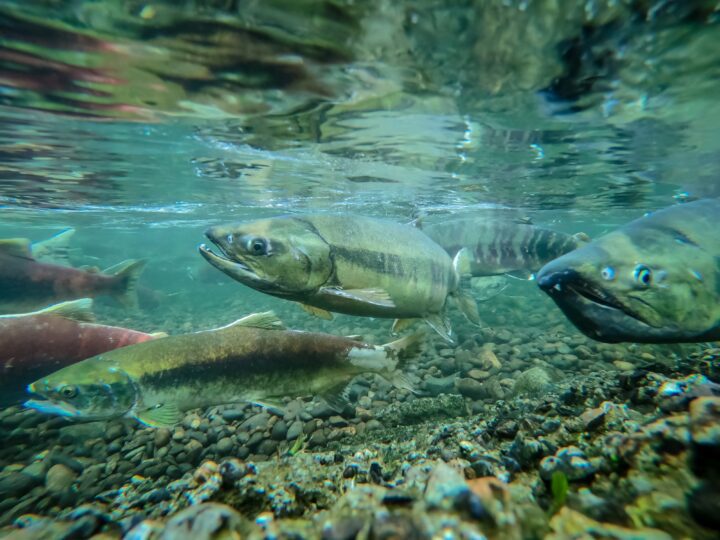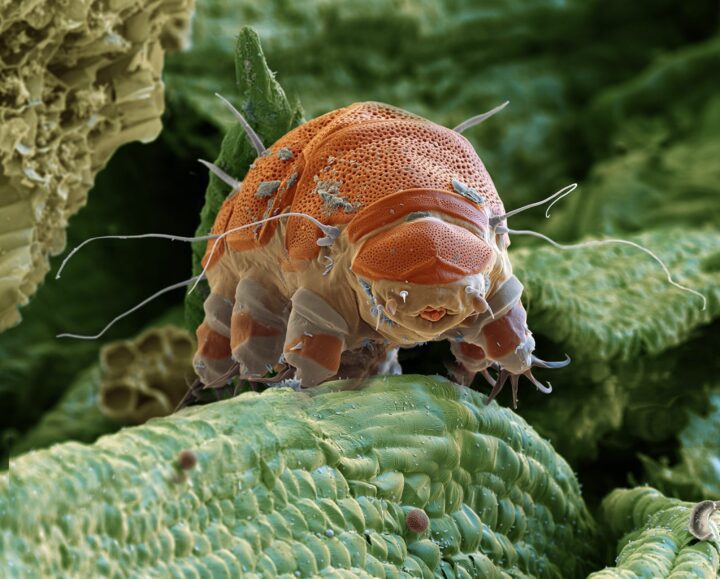Modify Phase
Gases, liquids, and solids are phases of matter found in and around living systems. Modifying these phases entails transforming from one to another, such as ice melting into liquid water or water turning into gas vapor. Phases of matter have different properties, so living systems need strategies to manage different phases. Modifying phases enables living systems to take advantage of the properties of more than one phase to carry out life activities. An example of how a living system manages and uses different phases is found in the rainforest. The forest obtains water from rain and some goes into the soil to be taken up by the roots. But some water remains in the forest’s canopy, where it evaporates to a gaseous phase and is carried elsewhere by air, descending again as rain on a different ecosystem.
Cycle Nutrients
In ecosystems, there is no such thing as waste. Instead, one organism’s waste can be considered as another organism’s resource, and the cycling of nutrients may be the most important form of recycling in living systems. But sometimes those nutrients are transformed by one organism into a form that isn’t readily used by other organisms. For example, lignin is a complex organic molecule found in the cell walls of plants. In a forest, it’s one of the hardest molecules to break down in woody vegetation. Therefore, ecosystems include organisms that are particularly well-adapted to break down different types of nutrients. In the case of lignin, some fungi and bacteria release lignin-modifying enzymes that can break down the lignin to form carbohydrates and other life-supporting chemicals.
Protect From Chemicals
Chemicals are everywhere in the bodies of living organisms and their external environments. While most chemicals are valuable or benign, some are toxic, including those used for defense (such as the mucus that protects clownfish from an anemone’s stinging tentacles). Even naturally-occurring chemicals, such as arsenic, must be managed to reduce their impact. Some living systems have strategies to break down harmful chemicals, alter them into less toxic forms, physically prevent chemicals from harming sensitive tissues, and more. For example, some herbivorous mammals can digest toxic compounds in plants because they have a particular enzyme that helps them process poisonous plant compounds.
Maintain Homeostasis
When a living system is in homeostasis, it means that internal conditions are stable and relatively constant. For example, a human’s internal temperature is approximately 37 degrees Celsius (98.6 degrees Fahrenheit) unless there’s an illness. The human body maintains this temperature despite external ambient temperature. However, as with all physiological processes, maintaining homeostasis requires communication and coordination. So living systems have ways to detect changes from the norm, mechanisms to cause an adjustment, and negative feedback connections between the two. A desert lizard called the Gila monster offers a good example of maintaining homeostasis. The lizard goes from eating large meals to fasting for extended time periods. To maintain its blood sugar levels at a steady level, when food is scarce, its endocrine system releases a hormone that raises its blood sugar levels.
Expel Gases
The most familiar forms of discharging gases are through respiration when many living systems release carbon dioxide, and when plants release oxygen as the end product of plant photosynthesis. Because gases cannot be effectively moved through pushing, a different kind of force is needed to expel them. Creating that force requires energy, even at the cellular level, so living systems must have efficient strategies worth the energy investment or use an external force. This typically entails strategies that build up pressure or use other forces to propel gases. For example, a human exhales about 15% of its spent air per breath. In contrast, when a whale surfaces, it exhales 90% of its spent air in just one spouting.





